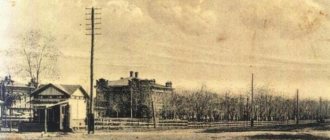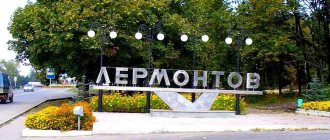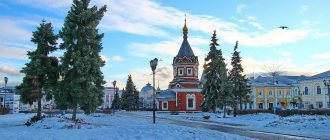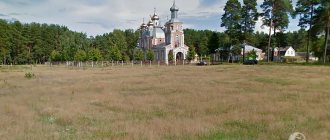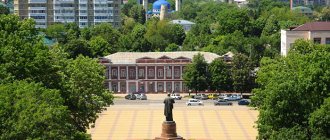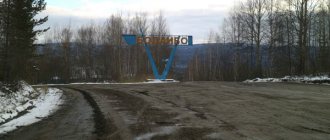Initially, in the Krasnodar region, in the place where the city of Armavir is located, an aul arose in which the Circassian Gai - mountain Armenians who left the Adyghe auls during the Caucasian War - found refuge. According to one version, Armenians moved to the Ciscaucasia in the 15th century from Crimea, captured by the Ottoman Empire, which carried out aggressive Islamization of the population. For more than three hundred years they lived in the mountains with the Circassians, adopting their customs, way of life, and culture.
The Russian Empire took the oppressed peoples under protection, and in 1839 the first Armenian families were resettled in the foothills of the Caucasus to the plain at the confluence of the Urup River with the Kuban, where the city of Armavir is located. The place was protected from uninvited guests: on one side there was the deep Kuban River, on the other sides there was a surrounding deep ditch and a high rampart. They called this settlement Armenian village. Its population was replenished by refugees fleeing pogroms, and already in 1840 four hundred Circassian families lived here. Despite the fact that the mountain Armenians left their historical homeland several centuries ago, they retained the Christian faith, and in 1848 they renamed the village Armavir - that was the name of the capital of Armenia in the old days.
Trading at risk of your life
The Caucasian war did not bypass the Armavir village either: residents engaged in their usual peaceful activities - cultivating the land and raising livestock - had to defend themselves from the raids of the mountaineers and even strike back at them. In the dangerous conditions of the war, the Armavir people did not stop trading with the mountaineers (both with supporters of Russia and with those who fought on the side of its enemies), often at the risk of their lives: there were cases of robberies, and murders of merchants. But it was trade during this period that contributed not only to the development of the village where Armavir is located, but also to the strengthening of relations between Russia and the mountain peoples.
Ruinous wars
The construction of the railway gave impetus to the development of the village, and already in 1914 it acquired the status of a city. But the Civil War and military intervention that began after the revolution, accompanied by endless battles in the place where Armavir is located (the government in the city changed three times), led to hunger, devastation and banditry. It was only in 1920 that Soviet power was established here and peaceful life began.
The Great Patriotic War also did not bypass the region where Armavir is located: already in 1941, the Nazis tried to capture the city, subjecting it to numerous bombings. Many residents managed to leave it, many fought in the partisan detachment. In 1942, the Germans captured Armavir; during the occupation, more than six thousand Armavir residents were shot. When our troops entered the city in 1943, they found it almost completely destroyed; not only residential buildings, but also industrial enterprises and a power plant were blown up.
The municipal formation of the city of Armavir is located in the southeastern part of the Krasnodar Territory on the left and right banks of the Kuban at the confluence of the left tributary of the Urup , 202 km southeast of Krasnodar. An important railway junction: the Armavir-Rostovsky and Armavir-Tuapse stations of the North Caucasus Railway. The municipal formation of the city of Armavir includes the city of Armavir and 3 rural districts: Zavetny - Zavetny village, Prirechensky - h. Krasnaya Polyana, Starostanichny - Staraya Stanitsa village. The municipal entity borders the lands of the Novokubansky and Uspensky districts of the Krasnodar Territory .
The population of the municipal formation of the city of Armavir is 206.4 thousand people, the city of Armavir is 188,286 people. Area - 279.2 sq. km.
At the beginning of the 19th century, mountain Armenian Christians began to move to the borders of Russia. The main reason for this transition was the desire of the Trans-Kuban Armenians to preserve their national identity and their own Christian religion, as well as the desire to establish stronger trade ties with the Russian Empire. For its part, Russia was interested in settling the Kuban plain. Through the mediation of the mountain Armenians, the military authorities hoped to attract the population of the Trans-Kuban region to peaceful trade and trade. The massive transition of the Circassian-Gai to the Russian borders was led by the commander of the Kuban Line, Major General Baron Grigory Khristoforovich von Zass, who played a major role in the founding of Armavir. On April 21 (May 3, new style), 1839, on the left bank of the Kuban River, opposite the Prochny Okop fortress, by order of General G.Kh.
In 1848, on the initiative of the Armenian priest in Stavropol Petros Patkanyan, the Armenian settlement received the name “Armavir”, in memory of the capital of the ancient Armenian kingdom, which flourished in the second half of the first millennium BC. In the same year, permission was given from the Caucasian governor to rename the Armenian village to Armavir.
In 1861, the construction of the Armenian-Gregorian church was completed in Armavir, and the first Russian parochial school was opened in 1865.
A new big impetus for the further development of the village was the fact that in 1875 the Vladikavkaz Railway passed Armavir Armavir , and repair and mechanical workshops for agricultural implements began to operate.
After numerous appeals to various government agencies, the village of Armavir became a village in 1876. The number of inhabitants was 3715 people. Gradually, the village of Armavir is becoming a major commercial and industrial center of the North Caucasus. By 1896, the village had 4 churches, 17 public and 2389 private houses, 235 shops, 2 tobacco factories, a cotton factory, 3 brick factories, a lime factory, 3 soap factories and 4 oil mills. Trade has developed greatly.
In 1904, construction began on the first power plant in Armavir, which was built in 1905.
In 1908, the Armavir-Tuapse Railway joint-stock company was created. The goal of the society was to connect the industrially developed village of Armavir and nearby villages with the Black Sea coast.
On March 23, 1914, according to the old style, the village of Armavir, by order of Emperor Nicholas II, was transformed into the city of Armavir .
Received municipal status in 1996. The municipal formation of the city of Armavir by the law of the Krasnodar Territory of April 1, 2004 No. 684-KZ “On establishing the boundaries of the municipal formation of the city of Armavir and granting it the status of an urban district.”
The Federal Highway M29 and E 50 pass through the territory of the Moscow Region.
On the territory of the city, 13 archaeological monuments and 262 historical and cultural monuments have been preserved.
A chain of mounds from the Early and Middle Bronze Age runs through the city, and there are 2 settlements of the Early Iron Age.
There are 189 architectural monuments preserved in the city. Including the building of the Armenian Apostolic Church “ Surb-Astvatsatsin ” (Assumption of the Blessed Virgin Mary) (beginning of construction - 1843, completion date (consecration) 08/25/1861).
The buildings of the Tatar mosque and Jewish prayer house have been preserved in the city .
The pride of Armavir residents is the art gallery “ Thinking of Mothers ,” located within the walls of the central children's library. The gallery is a unique collection of paintings, graphic works and sculptural forms dedicated to the theme of motherhood. The collector and donor of this collection was S.A. Dangulov (1912-1990), a Soviet writer, native of Armavir .
The following cellular operators operate in the city: MTS, Megafon, BeeLine, Tele2 and SkyLink.
Telephone code: +7 86137 Official website of the Moscow Region: www.armawir.ru Entertainment portal of the city: www.gorod-armavir.ru
City today
After the end of the war, the territory where Armavir is located, like the whole country, healed the wounds inflicted by the Nazis. Today the city has many large industrial enterprises, a developed transport network: the federal highway M 29 passes through, there are two railway stations, a local airport, the nearest airports are in Stavropol (110 km), in Mineralnye Vody (180 km), Krasnodar (200 km).
Armavir attracts young people with the opportunity to ride a phaeton, go horseback riding, go hiking and mountaineering, hang gliding or paragliding. In the city and its surroundings, tourists will be interested in visiting more than two hundred historical monuments.
Is it worth moving?
It is difficult to say what forces native Muscovites and St. Petersburg residents to leave megacities and go to the Krasnodar Territory.
Armavir, like any other city, has its pros and cons. Many local residents earn good money, live in large, comfortable houses and drive good cars. There are several industries in the city.
The streets are clean and well-groomed. There are many places in the city where you can relax with children. There is little entertainment for adults: two cinemas and a small theater.
Positive and negative sides of Armavir
Negative reviews about the city
Below are real reviews from people who moved.
Galina : “Armavir has the mentality of a big village. If it weren’t for my husband, who has a business here, I wouldn’t live here a day, it’s very difficult.
Here, as probably nowhere else, nepotism is developed. Without connections you are nothing. If you need to enroll your child in kindergarten, you must contact someone and pay. The amount is considerable, it’s easier for me to hire a nanny who will pay attention only to my child.
It is customary to provide sponsorship to the school. This is done on a voluntary-compulsory basis, otherwise the child will have big problems.
There is practically no work in the city. Mostly people work as taxi drivers (men) or work in shops and markets. The fact that a taxi driver earns the same as an engineer is generally ridiculous.
One of the most important criteria for me is mentality. He is very specific here. People are unfriendly and gloomy. I noticed one detail: almost everyone here talks very loudly, and there is a characteristic accent in their speech.
One good thing is the climate and fresh air. If you move, then live only outside the city, away from everyone.”
Peter : “Armavir under the USSR was a wonderful industrial city. Today it is a city of taxi drivers, barbers and salesmen. There are almost no working factories left; almost all enterprises are closed.
The real salary, if we talk about those who work officially and receive “clean” wages, is 10,000–15,000 rubles/month. All kinds of sales representatives live better. And even in this case, you need to have your own car and be prepared to ruin it. You will have to travel a lot, and the quality of the roads here... well, is approximately the same as in central Russia. You should be prepared to plow from early morning until late at night, only then can you expect to receive as much as 20,000–25,000 rubles per month.
Anyone planning to move for permanent residence to Armavir should be prepared for the dishonesty of local employers. A person can be hired supposedly for an internship, although, in fact, he is offered to work for free for a month. And then the words await him: “Sorry, you are not suitable for us.” And where to go with this?
For those over 45, it is almost impossible to find a job, except perhaps as a security guard somewhere in a kindergarten, and then through a lot of connections. And the salary will be something around 10,000 rubles.
The people here are very difficult. Although, maybe I was so unlucky... However, I lived in many cities, including in the North, but nowhere else have I seen such arrogant people. This is especially true for young people.”
Irina : “It’s very hot here in the summer. I am hypertensive, and for me above 25 degrees is already hell. And in Armavir, starting from June (and sometimes from May), hot weather sets in. In July-August it is impossible to go outside.
As for work, there is practically none. Of course, you can always answer something like “He who seeks will always find,” but not everyone is ready to work for 8–10 thousand. In Moscow, schoolchildren earn so much money by offering all sorts of nonsense on the streets! And here you have to sweat a lot for this amount.
It’s more difficult for girls to get a job: the employer is afraid that you will go on maternity leave, even if you are only 18, and you don’t have a husband, or even a permanent boyfriend!”
Watch the video about Armavir.
Positive reviews about the city
Ksenia : “My husband and I moved to Armavir from Siberia. I immediately liked the city: warm, sunny, cozy and compact. It seems to me that this is because Armavir residents have a different mentality, different from Siberians.
In the city, up to 70% is in the private sector. The houses are very tall and spacious. “Quadrature” - from 100 to 300 m. It is noteworthy that large families rarely live in such mansions. Basically it's husband, wife, child. There are no wooden houses. Almost all residential buildings are built from high-quality bricks.
A very green city. Because of the greenery, even very high temperatures are almost not felt.”
Maxim : “The city is clean and quite well-groomed. There are many excellent stores, and there are never any problems with the products.
There is little entertainment. It helps that in the summer we often go to the sea. In July the heat begins to be very intense, so it’s hard to live without the sea.
Regarding work, an important nuance: locals do not like to employ people officially. Workers should be especially careful: they may not get paid.
A super qualified specialist can find a good job. IT specialists settle down normally. For everyone else, I don’t see the point in coming here, because it’s unrealistic to live on 8-12 thousand a month.”
Church built three times
The oldest church in Armavir is Surb-Astvatsatsin (Assumption Church), the construction of which began almost immediately after the founding of the Armenian village - in 1840 - with donations from residents and funds allocated personally by Nicholas I. But a fire destroyed the wooden building, which was almost completely rebuilt.
In 1846, construction began on a new stone church on the site of the one that burned down. But errors in the drawings led to the collapse of ceilings and cracks in the walls. The building was completed according to a new project, where the mistakes of the previous one were taken into account and some changes were made. The first service was held in Surb-Astvatsatsin in 1861. The Assumption Church escaped destruction during the war and today adorns the city, being one of its main attractions.
Climatic conditions
The climate of Armavir is quite humid and mild. The presence of good weather is due to the proximity of the Black Sea and the Greater Caucasus Mountains. Summer is hot, autumn is soft and beautiful, spring is rainy.
Winter has little snow, but is very windy. In December, the wind speed is 25 m/sec. The height of the snowdrifts reaches 15 cm. The snow remains until February-March.
Approximate temperature by month
| Month | Temperature |
| December | +5 |
| January | −9 |
| February | −4 |
| March | +4,6 |
| April | +11,5 |
| May | +16,4 |
| June | +20,4 |
| July | +23,2 |
| August | +22,9 |
| September | +17,8 |
| October | +11,6 |
| November | +5 |
Samson the cat and Ruslan the camel
One of the favorite places of citizens and guests is “Madagascar”, a zoo in Armavir, where there are more than forty animals and birds from different parts of the planet: turtles, badgers, foxes, lions, roe deer, meerkats, raccoons, parrots, pelicans, herons, ostriches... All inhabitants are housed in spacious enclosures designed specifically for each species. Many animals came here emaciated, sick and mutilated by their owners, mainly photographers doing business in taking photos with exotic representatives of the fauna.
“Madagascar” is maintained mainly through charitable donations from visitors; some Armavir residents enter into an agreement and become sponsors of their favorite zoo resident. Zoo address: st. Komsomolskaya, 123.
